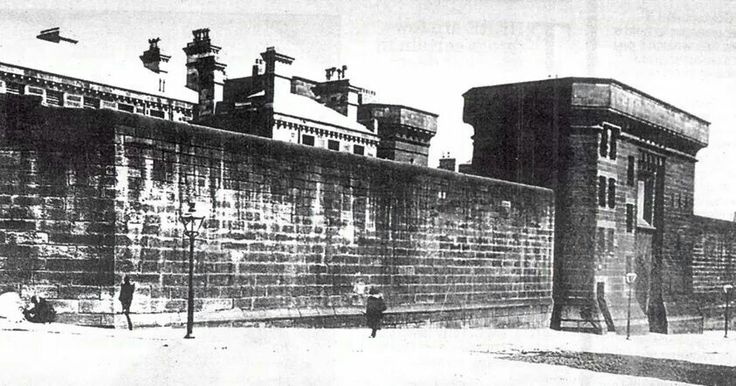A new research project is to look into the grisly history of Newcastle Gaol – an institution notorious for its history of executions, escapes, harsh rules and appalling conditions. The gaol was once described as “a nest of villainy”.
The gaol was closed in 1925 and demolished shortly afterwards. The team behind the research project, however, hope that local people may be able to help fill in the gaps concerning this dark and grisly part of Newcastle’s history.
The project is being undertaken to mark the 100th anniversary of the last execution at Newcastle Gaol. On 26th November 1919, just months after coming back from serving in World War One, 28-year-old Ambrose Quinn was hung for the murder of his wife, who he’d suspected of infidelity.
The gaol – located in Carliol Square – had a number of notorious inmates who faced the rope. In January 1829, Jane Jameson, a fishwife from Newcastle’s Quayside, was publicly executed for killing her mother with a glowing-hot poker while in a drunken rage.
The judge ordered that Jane’s body should be given up for dissection. The punishment for murder sometimes extended beyond death, with female offenders tending to be dissected and males gibbetted, meaning their corpses were displayed in iron cages as a deterrent to others.
Attitudes were, however, changing. Jane was the last woman in Newcastle to face dissection and support for public executions was also fading. Newcastle’s final public execution took place in 1863. After that, they were carried out behind the gaol’s walls.
Newcastle Gaol opened in 1828. Though there were hopes it would be a modern progressive institution that would rehabilitate its inmates, the prison soon gained a reputation for overcrowding as well as for being damp and infested with rats.
Dr Shane McCorristine, a lecturer in history at Newcastle University and a member of the research team, said, “Newcastle Gaol may be long gone and very few signs of the gaol or any of the city’s places of execution remain. But the area around Carliol Square has a rich legacy associated with the criminal justice system.”
“We know that in its final years, the gaol was surrounded by homes, pubs and even a school. We want to hear from anyone who has any memories that can help us tell the story of Carliol Square and the history of crime and punishment in Newcastle.”
Under the gaol’s tough regulations, prisoners weren’t allowed to communicate with each other or barter provisions. In reality, prisoners seem to have talked with each other frequently.
Debtors were treated differently to the other prisoners and given three pints of ale a day – which they tended to barter with, or sell to, their fellow inmates.
Prisoners were only allowed visits every three months, except for debtors who could receive visits daily. Prisoners also had to do hard, monotonous work. If they did their tasks well, they might be allowed to sleep in a hammock rather than on a plank and get slightly better food.
Most of the gaol’s inmates were young, with the majority aged between 16 and 25. Children were also kept in the gaol, with some prisoners being as young as nine.
Overcrowding was always a problem. Dr McCorristine said, “A lot of the issues the prison was facing were down to its location near the centre of a rapidly expanding city.”
“The prison population soared due to the population growth Newcastle was experiencing at the time, as well as a general increase in the policing and punishment of urban and poverty-related crime.”
Most of the prisoners came from Newcastle and Gateshead, but a significant proportion were Scottish and Irish, reflecting patterns of immigration into Newcastle at that time.
The majority of the inmates were jailed for theft. Several prisoners managed to break out of the gaol in high-profile escapes.
The study is being part funded with a grant from the Catherine Cookson Foundation. The results of the study will be displayed in an exhibition planned for next year and on a website dedicated to the research.
If you know of any facts, stories or images relating to Newcastle Gaol, please email shane.mccorristine@ncl.ac.uk.
(Featured image courtesy of Roger M Hart from Pinterest)




















